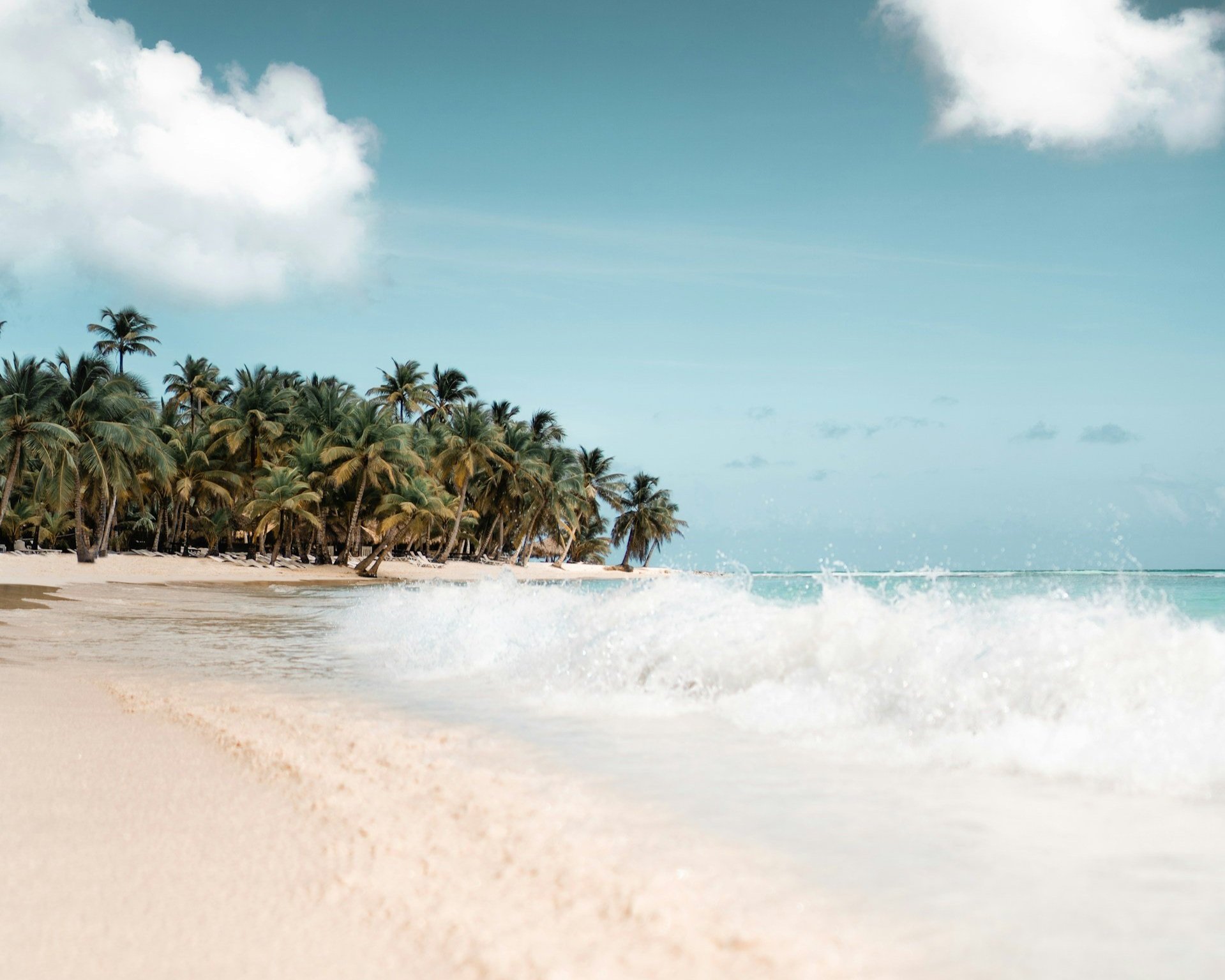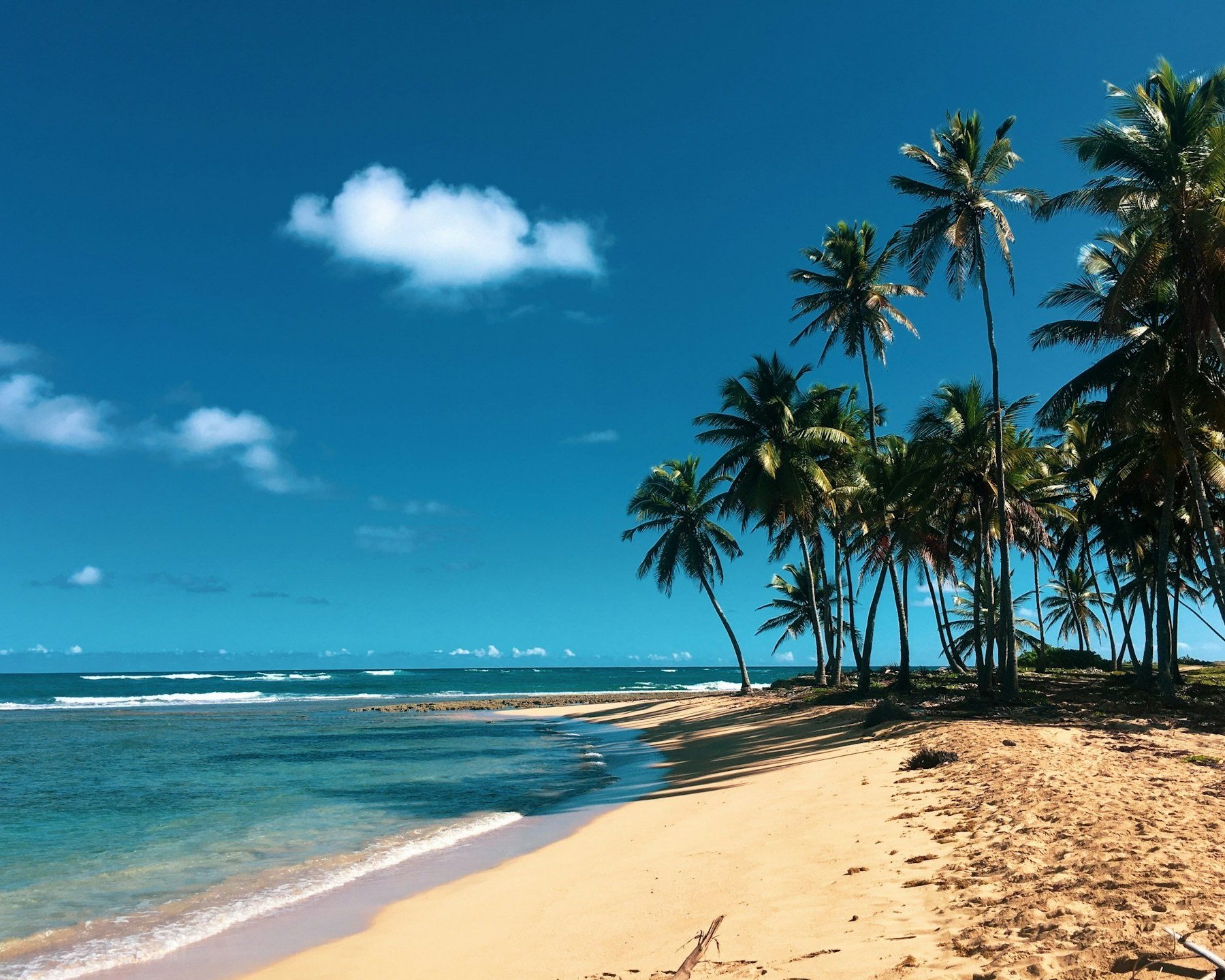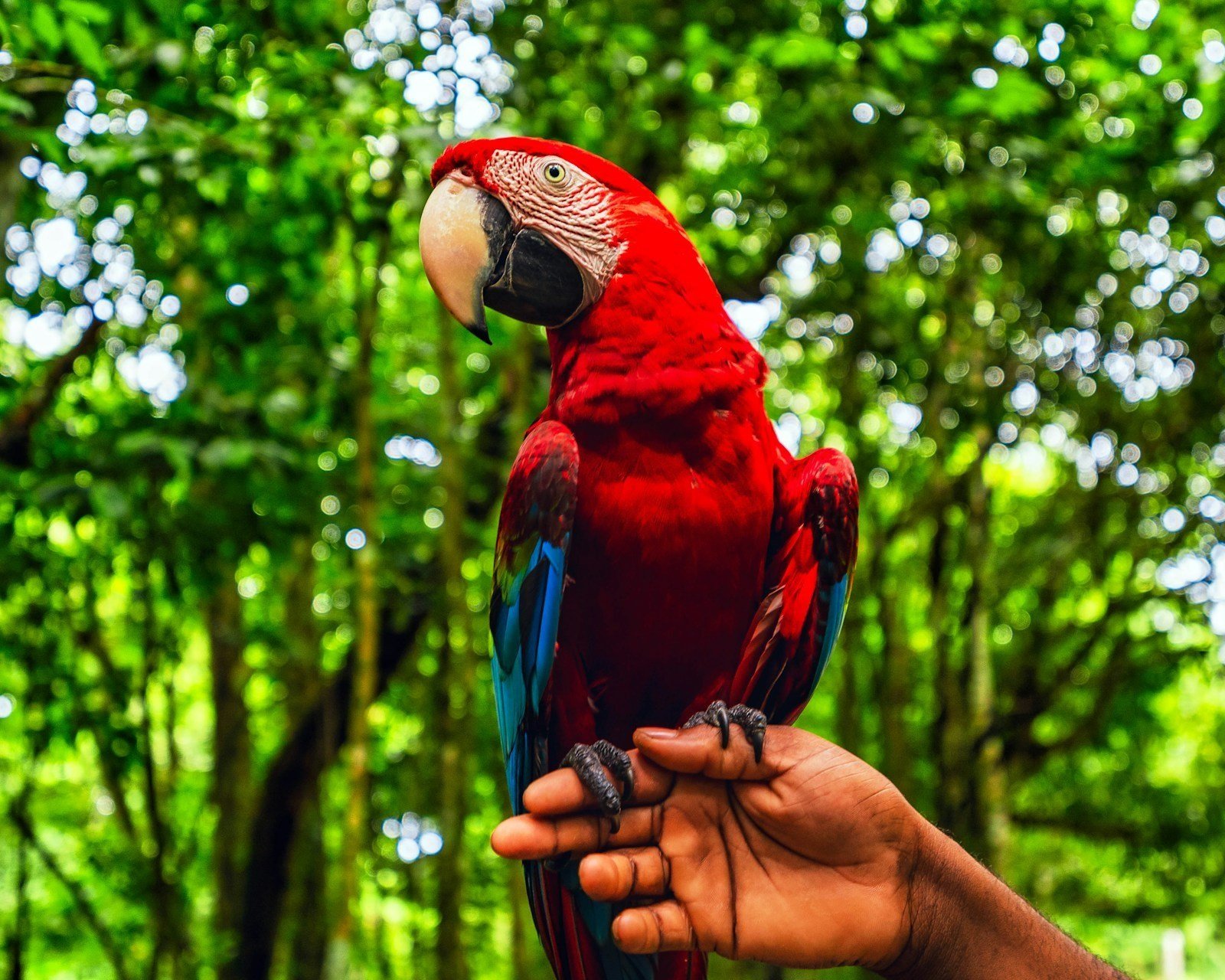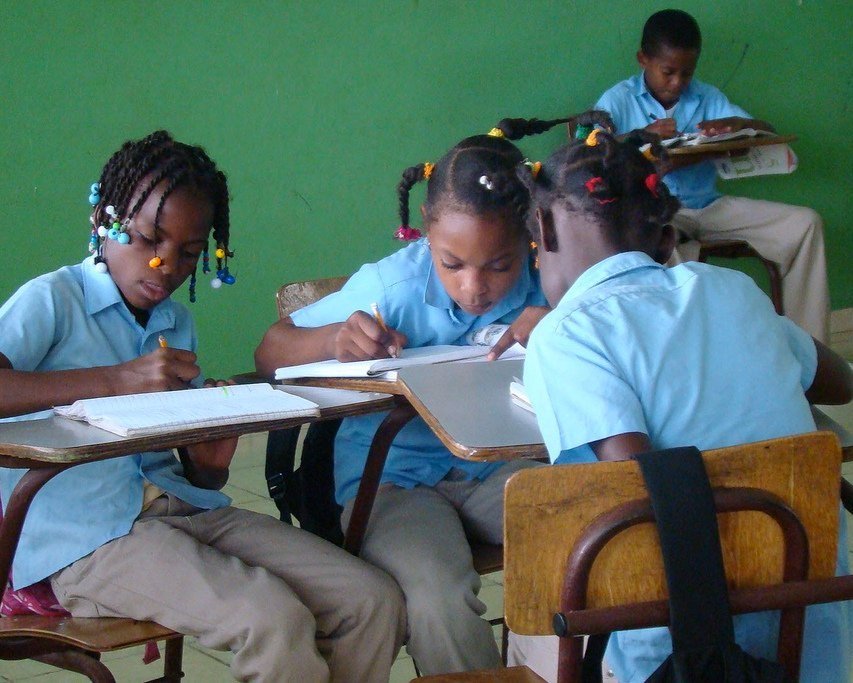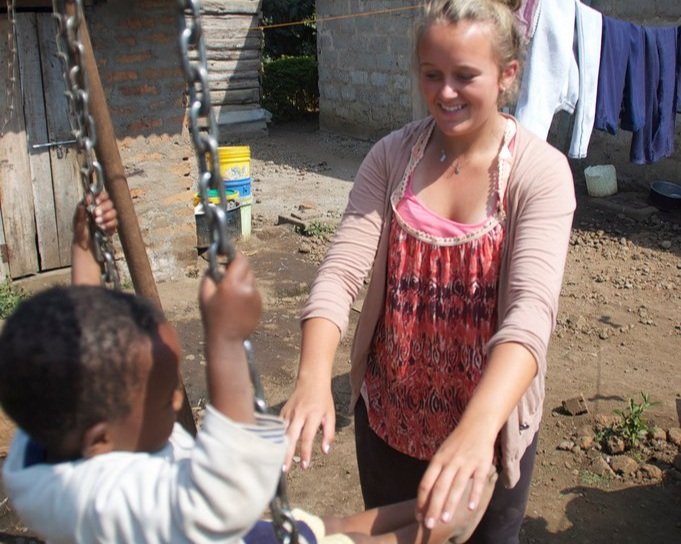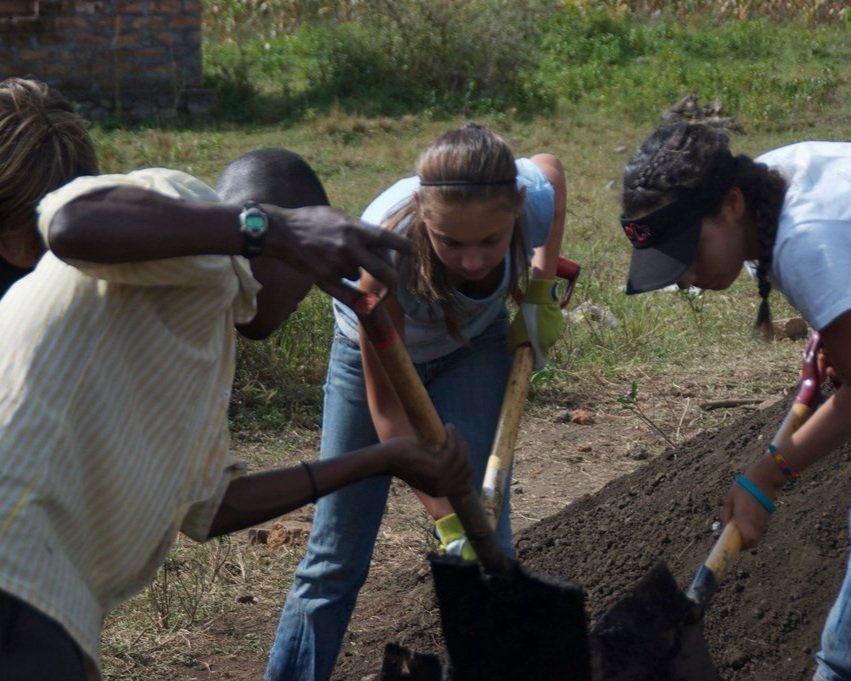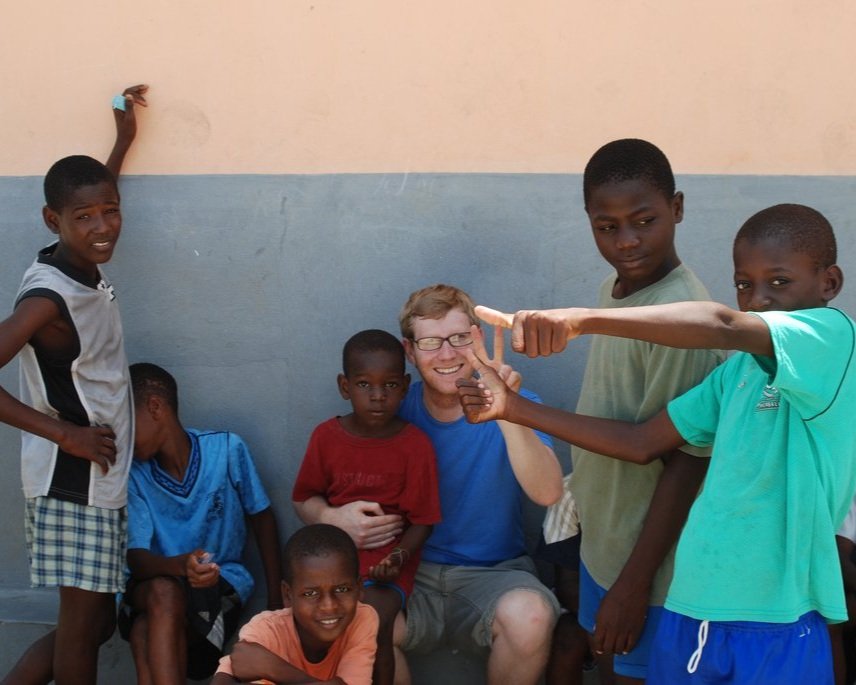
HIGH SCHOOL COMMUNITY SERVICE AND CULTURAL IMMERSION TRIP
JULY 3 - JULY 16, 2025 (WAITLIST)
LENGTH 14 Days
COMPLETING GRADES 9 - 12
SERVICE HOURS 25 - 35
ARRIVE/DEPART Las Americas International Airport (Santo Domingo - SDQ)
TUITION $5995
Teens can spend 2 weeks with us in the Dominican Republic. Students will contribute to the ongoing community development project in San Pedro de Macoris. Work here consists of infrastructure rehabilitation, health initiatives, and education projects with local children. When not working on service projects, we will have the opportunity to relax on white sand beaches, enjoy Dominican daily life, and learn more about this beautiful and complex Caribbean island.
TRIP HIGHLIGHTS

CHECK OUT IMAGES FROM THE TRIP BELOW!
TRIP OVERVIEW

ACTIVITIES
Explore Santo Domingo: A vibrant UNESCO World Heritage site, rich with food and music.
Taste: Traditional Cocolo and Dominican cuisine
Learn: Learn about the birth of the sugar industry
Catamaran tour: Of Isla Saona
Underground caverns: Visit Las Cuevas de las Maravillas
Snorkelling: In the tropical Caribbean water
Jungle hike and swimming: Around Hoyo Claro
SWIMMING ABILITY
Due to the nature of this program, it is required that participants are comfortable being in the water and swimming in various depths.
SERVICE
A Certificate of Community Service indicating the total number of hours worked and a group Presidential Volunteer Service Award will be issued upon successful completion of the program. Service work could include some of the following:
Batey Community Project: Work on infrastructure projects designed to increase the standard of living in the batey. Projects include the construction of cement homes which could consist of digging foundation, mixing cement, laying cinder blocks, plastering and/or painting depending on which stage the project is in. Other projects could include building latrines, cementing floors, and educational exchanges with local youth.
Healthcare Project: We will help support a community health project in partnership with a local NGO. The group will help with weighing and measuring local children, giving out essential vitamins and medication, and help deliver educational health workshops to local youth. This can be a challenging part of the program. We will discuss public health case studies to better understand the issues locally, and students will have support from our local partners and trip leaders on these topics.
WHAT IS INCLUDED AND EXCLUDED IN TRIP TUITION
The trip tuition listed above includes accommodations, activities, meals, and group gear. The tuition does not include personal gear and clothing, travel insurance, spending money, and travel expenses such as airfare to and from the start and end of the program, unaccompanied minor fees, and baggage fees.
ACCOMMODATIONS AND SHOWERING
Accommodations are a combination of rustic hotels and a volunteer center. Bedrooms will be divided by gender, and participants will sleep slumber party-style – in sleeping bags, rotating available beds nightly, and sharing beds as needed.
Bathrooms and showers can be rustic so please be prepared. In an effort to save time and conserve water resources in the areas we are traveling, participants will have access to showers every 3-4 days even when showers are readily available in private housing accommodations. On days with ocean-based activities, participants will be able to rinse off with fresh water. Bathrooms are a mix between flush toilets and latrines.
FOOD
All meals on this trip are planned and prepared by our in-country community partners. There may be opportunities to assist in food preparation depending on the preference of the partner.
Expect to eat meals that are consistent with the culture we are visiting. While other food options may be available, we will be sharing meals with our community partners, and eating what they eat as part of our cultural exchange.
We are able to accommodate all dietary requirements and preferences.
TRAVEL
Families are individually responsible for booking their own airfare or making their own travel arrangements to get their students from home to Santo Domingo, (SDQ) on the first day of the trip, and from Santo Domingo, (SDQ) to home on the last day of the trip. RLT will provide exact windows of time that we require all students to arrive and depart within. It is imperative that no one make any travel arrangements until RLT directs them to do so.
A leader-escorted round-trip flight will be available between a major US airport and Santo Domingo (but is not required) for those travelers who wish to fly with a leader. Booking information for the escorted flight will be available after enrollment.
TRAVEL INSURANCE RECOMMENDATIONS
The Road Less Traveled does not provide its own insurance nor do we require travel insurance for domestic trips. However, travel insurance can protect your investment in your participant's trip from the risk of unexpected expenses from last-minute cancellations or early trip departure. If you are interested in more details regarding travel insurance, please visit our FAQ page or you may contact a member of our team at info@theroadlesstraveled.com or 773-342-5200.
TECHNOLOGY
As part of the RLT experience, our trips are electronic-free. While it is encouraged to travel with cell phones, leaders will collect phones and any other personal devices after all participants arrive on the first day. It can feel tough initially to not have access to your phone, but it really helps everyone in the group to connect and have a really great trip experience. This includes phones, iPods, tablets, gaming devices, music devices, smartwatches, etc. All electronics will be held by RLT leaders, kept safe and dry for the duration of the trip, and returned at the end of the program. All cameras, go pros, etc. are acceptable and can be kept with you! If you do not have a camera, please note that leaders will also be taking photos throughout the program, and these photos will be shared through an online gallery.
My son has never enjoyed a camp or trip as much as he has enjoyed his RLT experiences!
- SUMMER 2024 ALUM PARENT -

SAMPLE ITINERARY

*Please note the itinerary listed below is the intended itinerary for this trip. No two trips are exactly the same. All itineraries are subject to change to ensure the best possible program experience. Weather, group dynamics, new opportunities, and the unpredictability of travel all shape the final trip itinerary - and it's all part of the adventure!
Arrival (Day 1)
Leave the US and arrive in Santo Domingo where our leaders will be ready and waiting for you at the airport. For students that choose the escorted flight, you will meet a trip leader in the US and fly together. We will take a short transfer to our hotel accommodation, before heading out the explore the city. We will visit the Colonial Zone, the historic walled quarter and UNESCO World Heritage site that is rich with food and music. Old colonial buildings have been converted into coffee shops, restaurants, and community arts spaces, and the weather allows for a blossoming bohemian scene at night where the La Zona Colonial’s plazas and squares become centers for artistic, folkloric and cultural expressions. In the evening, we will have an traditional dinner and dance show at a local Dominican restaurant.
San Pedro de Macorís (Day 2)
Today we head east and get ready to explore the province of San Pedro de Macorís. We visit the museum in town and discover the history behind one of the first settlements on the island. Learn about the birth of the sugar industry in the Americas and the cocolos, African-descended migrants who arrived in the Dominican Republic to work in the sugar industry as workers and technicians. After visiting the museum, we stop at Rincón Cocolo, the only restaurant in the country that serves traditional cocolo cuisine that was founded by one of the first cocolos.
In the afternoon, we meet our service partners who are dedicated to supporting underserved communities in the region. We learn about the socio-political issues facing the bateyes. The word batey is the word for the long barracks that were originally built for migrant sugar cane workers, and are now used as permanent settlements for multiple families. Many families in batey communities are faced with substandard housing, unsafe and low-wage working conditions, and limited access to health care or social services. Community members also face social and institutional discrimination as a result of their ethnicities or immigration status, since many families have migrated from Haiti to look for work or to join family members working in the Dominican Republic. Our partners will translate as needed and give context to the projects, history, and barriers to success.
We then go into the sugar cane fields where we will meet and talk to some of the sugar cane cutters, hear their stories, and learn about the hardships they face every day. We will also visit some of the community partners and learn about the ongoing work in the area.
Batey community service projects (Days 3 - 5)
The next section of our trip is spent on our first service project. We spend the next three days working alongside our partner community on infrastructure projects designed to increase the standard of living in the batey. Projects include the construction of cement homes which could consist of digging foundation, mixing cement, laying cinder blocks, plastering and/or painting depending on which stage the project is in. Other projects could include building latrines, cementing floors, and educational exchanges with local kids.
Cueva de las Maravillas (Day 6)
Today, we take a break from our service work to take a guided tour through the majestic underground caverns of las Cuevas de las Maravillas. Discovered in 1926, this cave system is decorated with hundreds of indigenous Taíno cave paintings. We explore at the intricate rock formations and ancient Taino artwork adorning the walls as we wander through the caverns, learning about the rich history and natural beauty of this hidden gem. In the afternoon, we take time to relax and soak in the serene atmosphere of the surrounding countryside before heading back to the accommodation.
Juan Dolio beach day (Day 7)
We spend the day in the beach town of Juan Dolio. This is the perfect place for relaxing on the beaches, swimming, playing games, and exploring the South Coast.
Batey health workshops (Days 8-10)
For our second service project, we help a community health project run by a local NGO. We will help to weigh and measure local children, give out essential vitamins and medication, and deliver educational health workshops for local youth. As a group we will discuss public health case studies to better understand the issues locally, and allow time for students to process and share what they have experienced and learned through hands-on work in the community.
Bayahibe (Day 11)
Today we have an early start and take a bus to Bayahibe; a beautiful coastal town with white sand beaches and turquoise waters. We take a catamaran tour of Isla Saona to see the beautiful surroundings from the coast, stopping along the way to snorkel and enjoy various beaches. We spend the evening relaxing on the beach and exploring this quaint Dominican town.
Playa Magallanes and Hoyo Claro (Day 12)
After breakfast, we take a short walk over to Playa Magallanes, a small hidden beach with a beautiful view of the Caribbean Sea. The waters of Magallanes beach are calm and clear, making it an ideal spot for snorkeling. Keep your eyes peeled for a variety of colorful fish, coral, and other marine life as we explore this unique corner of Bayahibe. After snorkelling, we head to a local restaurant for a hearty Dominican lunch, then hop on a bus and drive east to Hoyo Claro. This stunning natural swimming hole is found in the middle of the jungle, surrounded by lush vegetation. The water is crystal clear and cool, making it a refreshing spot to take a dip. Relax and enjoy the tranquil jungle surroundings.
Explore Santo Domingo (Day 13)
As the trip nears its end, we head back to Santo Domingo, and spend the rest of the afternoon exploring the Colonial Zone’s best spots for shopping, eating, and seeing the galleries of Afro-Caribbean folk art. So much of the vibrancy of the Colonial Zone comes from the respect and adoration for the country’s rural towns and nature, and you’ll see that resonate in the art and food now that you’re back in the city. We finish our trip with a dinner at Maison Kreyol, the most famous Haitian-Caribbean restaurant in the Dominican Republic. We reflect on our time over the last 2 weeks, and spend the last evening together as a group.
Homeward bound (Day 14)
We say goodbye to new friends before starting on the journey back home.
Get More Info
Hold Your Place
Similar Trips

